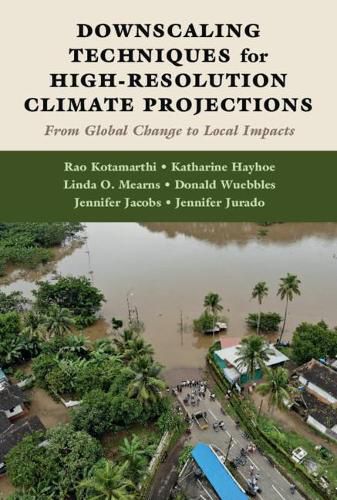Readings Newsletter
Become a Readings Member to make your shopping experience even easier.
Sign in or sign up for free!
You’re not far away from qualifying for FREE standard shipping within Australia
You’ve qualified for FREE standard shipping within Australia
The cart is loading…






Downscaling is a widely used technique for translating information from large-scale climate models to the spatial and temporal scales needed to assess local and regional climate impacts, vulnerability, risk and resilience. This book is a comprehensive guide to the downscaling techniques used for climate data. A general introduction of the science of climate modeling is followed by a discussion of techniques, models and methodologies used for producing downscaled projections, and the advantages, disadvantages and uncertainties of each. The book provides detailed information on dynamic and statistical downscaling techniques in non-technical language, as well as recommendations for selecting suitable downscaled datasets for different applications. The use of downscaled climate data in national and international assessments is also discussed using global examples. This is a practical guide for graduate students and researchers working on climate impacts and adaptation, as well as for policy makers and practitioners interested in climate risk and resilience.
$9.00 standard shipping within Australia
FREE standard shipping within Australia for orders over $100.00
Express & International shipping calculated at checkout
Downscaling is a widely used technique for translating information from large-scale climate models to the spatial and temporal scales needed to assess local and regional climate impacts, vulnerability, risk and resilience. This book is a comprehensive guide to the downscaling techniques used for climate data. A general introduction of the science of climate modeling is followed by a discussion of techniques, models and methodologies used for producing downscaled projections, and the advantages, disadvantages and uncertainties of each. The book provides detailed information on dynamic and statistical downscaling techniques in non-technical language, as well as recommendations for selecting suitable downscaled datasets for different applications. The use of downscaled climate data in national and international assessments is also discussed using global examples. This is a practical guide for graduate students and researchers working on climate impacts and adaptation, as well as for policy makers and practitioners interested in climate risk and resilience.